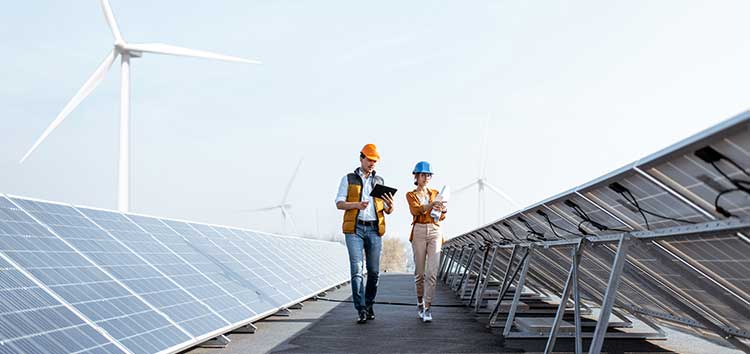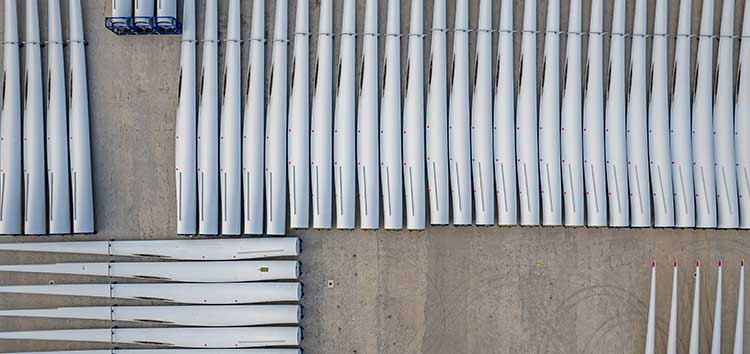Yinson Renewables Farming the wind
In Aotearoa New Zealand, we need to increase our energy supply and transition to a low-carbon economy.
The demand for electricity is increasing. By 2050, the amount of electricity we use is likely to increase by nearly 70%. At the moment, we don't generate enough power to supply this ever-growing demand.
It's no surprise to anyone living here that we have excellent wind resources.
Unlike many other countries, we also have plenty of land that’s suitable for onshore wind infrastructure.
Wind energy is cost competitive against all other forms of new energy generation.
Landowners across the country, including mana whenua, are looking to embrace sustainability in the way they use their land. Wind energy provides a sustainable and low-impact solution that has many benefits for generations to come.
Finding a site
We’re always on the look-out for potential new wind farm sites.
Coastal areas or exposed hill tops and ridgelines tend to have the highest average wind speeds. However, advances in wind turbine technology mean that sites with medium/average wind speeds are becoming viable.
We’re excited to work with Māori landowners who are keen to find healthy ways to utilise and gain revenue from their whenua, and we love working with all landowners who are interested in diversifying into renewables.
In general, key factors we look for in a potential wind farm site include:
- ample land (ideally over 1,000 hectares)
- good access and constructability
- not heavily populated
- culturally suitable
- close to transmission lines.
Other factors we look at include:
- technical and ecological constraints
- landscape and visual features forestry rights and activities.
We evaluate potential new wind farms by:
- holding discussions with landowners, iwi, key stakeholders, and a range of expert consultants
- assessing technical and environmental considerations like wind speed, site access, ground conditions, grid connection, noise and visual impact on neighbours and ecological sensitivities
- developing site concept designs to test if a viable project could be developed and constructed.
Seeking consent
For any wind farm we aim to build, we need resource consent from the relevant district and regional councils or from the Environmental Protection Authority (EPA).
After investigating a site, we need to apply for a resource consent. There are a few ways to do this, including:
- Standard resource consent applications (lodged directly with local or regional councils)
- Direct referrals to the Environment Court
- Fast-track consenting
No matter which option we choose, we still need to develop a resource consent application describing the project, its positive and negative impacts, and potential mitigation measures. We include assessments of environmental, cultural, archaeological, social, visual, noise, aviation, traffic and construction effects.
Check out our project pages for detailed information on engagement and consenting.
Possible wind farm effects
Noise
When we design our wind farms, we consider how far homes are from the turbines, the lay of the land, wind speed and direction and the kind of equipment we’ll need.
Landscape
We take steps to minimise the potential visual and landscape impacts of a wind farm by:
- Spacing turbines so they don’t appear clustered.
- Planting out particular areas.
- Painting turbines with off-white or grey non-reflective paint to help them blend into the background.
Cultural and social impacts
We take measures to manage them, in close consultation with our local partners and community:
- Archaeological assessments help us understand the landscape’s history and context and help ensure we preserve that history.
- Cultural Impact Assessments (CIAs) document Māori cultural values, interests and associations with an area or a resource, and the potential impacts on Māori and taonga Māori.
- Social Impact Assessments (SIAs) predict and measure the effects of a project on local people’s lifestyle, culture, community, health, environment and quality of life.
Ecological effects
We engage independent ecologists early in our projects, to understand our sites and consider any potential issues, so we can make good decisions, early. Ecological assessments:
- Provide information about site ecology, including vegetation, wetlands, streams, birds, bats and lizards.
- Provide an independent process for identifying, quantifying and evaluating potential impacts.
- Provide a scientific approach to ecosystem management as wind farms are developed and managed.
- Can guide future actions to restore or mitigate potential impacts.
Agriculture
Wind farms can have benefits for farmers and landowners, like providing a new income stream or improving site access. Generally, wind farms use a small amount of total project farmland (around 1–3%). Once construction is complete, agriculture and farming operations can typically continue under and around a wind farm.
Life cycle of a wind farm
Construction
Wind turbines are made up of four main parts: the foundations, a tower, a nacelle (the large housing at the top of the tower, containing the generator) and the blades. These parts are produced offsite and transported to site.
Installing a wind turbine requires multidisciplinary design, engineering and specialised cranes. Wind farms usually use overhead transmission lines to transport electricity from an on-site substation to the national grid. We determine transmission routes during development, in consultation with landowners.
We always manage construction processes carefully. Resource consent conditions set out what we’d need to do to minimise community and environmental impacts, from things like traffic movements to dust and sediment control or construction hours.
 1/3
1/3
Operation
Wind turbines need regular maintenance to ensure they’re in optimum working condition, so the wind farm operates for as long as it’s supposed to.
Well-maintained wind farms can operate for 25–30 years before needing significant equipment overhaul or replacement. If the time came to evaluate a wind farm’s future, we’d investigate several options
 2/3
2/3
Decommissioning
In general, resource consents are granted with the condition that the company is responsible for decommissioning.
Once a wind farm reaches the end of its life, we would need to decide whether to have the farm decommissioned and the land returned to its previous use, or to ‘repower’ the site with new turbines. This process involves engagement with the community and a new resource consent.
Most wind turbine parts can be recycled. World-wide, more effort is being put into recycling opportunities for wind turbine blades, as the number of turbines being repowered increases.
 3/3
3/3
